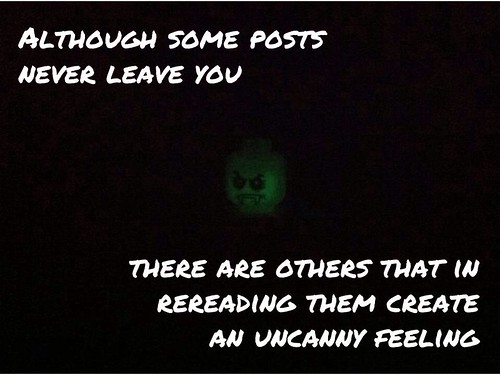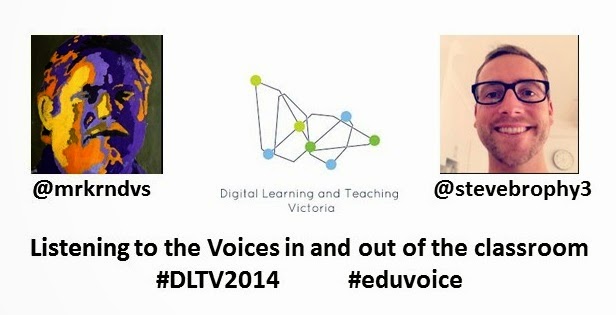I will never forget studying the representations of Holocaust at university whilst also emerging myself into the world Jean Baudrillard and postmodernism. My interests in literary theory could not help but bleed, let alone clash, with historical thinking. I had a similar experience recently while reflecting upon .
While I was wondering if reading without responding was reading at all, I stumbled up Jim Groom’s post ‘Blog OR DIE!‘. In it, Groom appeals to blogging as a way of life.
So this post is where I throw down the gaunlet and say Blog OR DIE! Not just as some blustery slogan (although that too!), but as an ongoing commitment to a way of life. A way of closing in strong on twenty years of blogging on this outpost of sense making in the wilds of the world wide web. 4life!
Source: Blog OR DIE! | bavatuesdays by Jim Groom
Although not directly related, this is what I was thinking about in regards to reading. Respond of DIE? If I have a thought in my head, in my notes or in my diary, is it really a thought if I have not really thought it through? Here I am reminded of the extract from Clive Thompson’s Smarter Than You Think published on Wired, in which he talks about the benefit of making your thinking public:
Having an audience can clarify thinking. It’s easy to win an argument inside your head. But when you face a real audience, you have to be truly convincing.
Source: Why Even the Worst Bloggers Are Making Us Smarter by Clive Thompson
This also feels like an extension of something Hannah Arendt wrote in The Human Condition in regards to the tangibility of thinking:
If labor leaves no permanent trace, thinking leaves nothing tangible at all. By itself, thinking never materializes into any objects. Whenever the intellectual worker wishes to manifest his thoughts, he must use his hands and acquire manual skills just like any other worker. In other words, thinking and working are two different activities which never quite coincide; the thinker who wants the world to know the “content” of his thoughts must first of all stop thinking and remember his thoughts. Remembrance in this, as in all other cases, prepares the intangible and the futile for their eventual materialization; it is the beginning of the work process, and like the craftsman’s consideration of the model which will guide his work, its most immaterial stage. The work itself then always requires some material upon which it will be performed and which through fabrication, the activity of homo faber, will be transformed into a worldly object. The specific work quality of intellectual work is no less due to the “work of our hands” than any other kind of work.
Source: The Human Condition by Hannah Arendt
It has me wondering if blogging is ‘intellectual work of the hands’?
With all this said, there is actually a strange side-effect about maintaining a blog for a long period of time. Ideas once lost have a habit of rising up again and haunting, rather than helping. This is something that Kin Lane has touched on in the past.
Our history is such a powerful thing. How we should learn about it, remember it, learn from it, but also understand when to leave it behind. Where is that fine line between, “Ok I have learned so much from writing and thinking about the first 40+ years of my life”, and “thinking about all of this much more begins to give it new power in controlling me and preventing me from moving on”.
Source: Leaving the Past Behind by Kin Lane
It is also something that Doug Belshaw has spoken about. He talks about the idea of ‘creative destruction’.
As humans, I think we are by nature both creative, in that we build things, and destructive, in that we destroy them. Creative destruction is a term that usually used in economics to describe the cyclic accumulation and destruction of wealth, but I’m using the term in a different way. I think we need to destroy the things we’ve created before they destroy us.
Source: On our tendency toward (creative) destruction by Doug Belshaw
An example of my blog as a living memory for me relates to the efforts to ‘make Twitter great again‘. It brings into question Peter Skillen’s concern about living off a diet of drive-by learning.
Many educators are living on a diet of abstracts, one-line wisdoms from Twitter, and drive-by professional development.
Source: Another Brick in the Wall by Peter Skillen
When Skillen wrote this, I was adamant that there were benefits associated with short-form media. However, there are clearly side-effects. With this said, I am left thinking that the comment around our ‘diet’ goes beyond short-form media.
While thinking about reading, I was left mulling over the association between ‘processed food’ and ‘processed media’. In Johann Hari’s book on Ozempic, he outlines the ways that processed food undermines our fulfillment.
Hari explains how processed food undermines satiety in seven ways:
Source: REVIEW: Magic Pill (Johann Hari) by Aaron Davis
- You chew it less.
- The unique combination of sugar, fat, and carbs seems to activate something primal and we go crazy for it.
- It affects your energy levels differently.
- It lacks protein and fiber.
- Processed drinks contain chemicals that may be actively triggering us to be more hungry.
- Flavor is separated from the quality of the food.
- It seem to cause our gut to malfunction.
Hari’s discussion of chewing less, activating something primal and flavour being separate from quality has me thinking about the current state of the media, especially after watching Paul Barry’s Media Watch farewell episode, in which he demonstrates how we are all scraping the bottom of the attention barrel.
Coming back to blogging, Amy Burvall talks about the importance of collecting the dots:
“in order to connect dots, one must first have the dots”
Source: #rawthought: On Ditching the (Dangerous) Dichotomy Between Content Knowledge and Creativity by Amy Burvall
However, this does not mean we need to collect every dot. With this in mind, I stumbled upon a quote from Francis Bacon, while searching for a quote by Austin Kleon:
Some books are to be tasted, others to be swallowed, and some few to be chewed and digested; that is, some books are to be read only in parts; others to be read, but not curiously; and some few to be read wholly, and with diligence and attention.
Source: Of Studies by Francis Bacon
In the end, I feel that there is a fine line when it comes to blogging. Although I think it is important to have an ‘intellectual work of the hands’, I wonder what it actually means to forget, of holding tightly and letting go loosely, when data can easily be loaded into a chatbot?
With all this said, I will leave the closing remark to Audrey Watters:
So I’m leaning into the newsletter and its paywall. Email isn’t perfect (read Sarah Jeong’s wonderful The Internet of Garbage) but the inbox feels intimate and personal without being so exposed to the extraction machine. “Open” doesn’t just feel dangerous; it feels naive.
But here I am, blogging on my own domain. Silly me.
Source: The Year in Writing by Audrey Watters
So here I am, silly me, blogging again. Saying something, although I am not really sure what.













